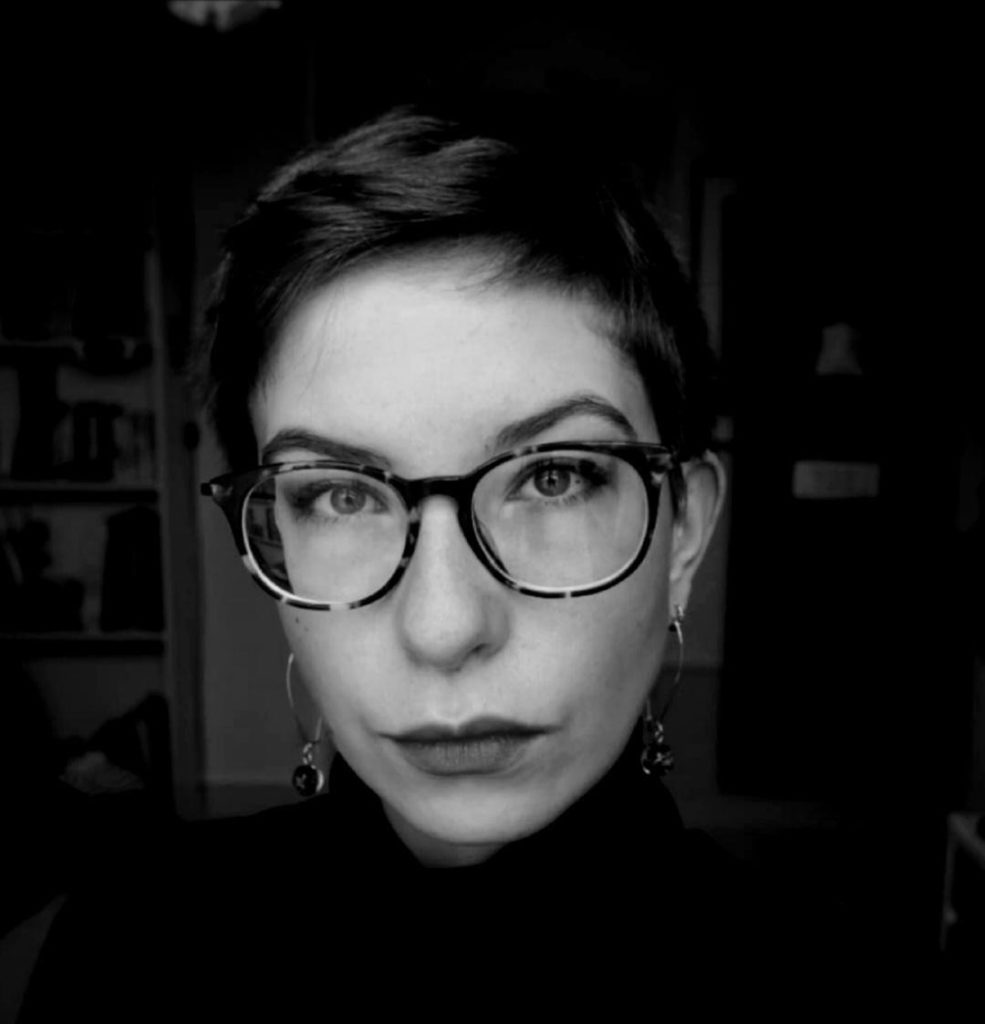WantedDesign is a dynamic connector and amplifier for global design, fostering creative synergy and serving as a pivotal crossroad for the international design community across Latin America, North America, and Europe.
We All Want to Go to The Refuge Island: Interview with the winners of the Conscious Design Award 2021
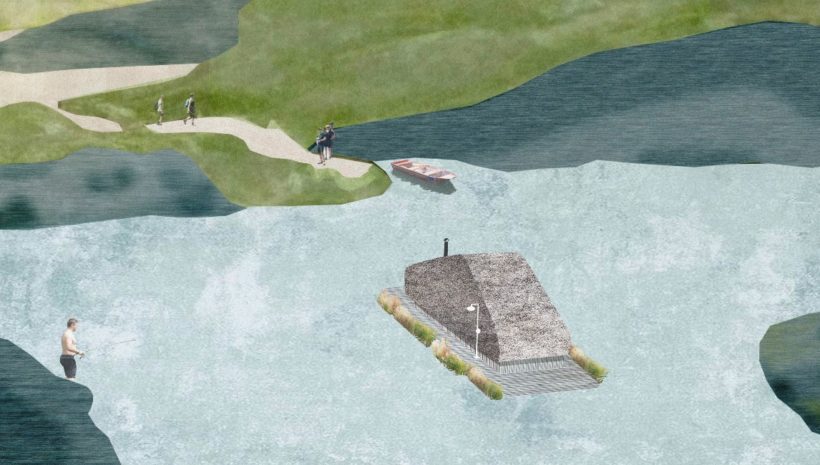
We All Want to Go to The Refuge Island: Interview with the winners of the Conscious Design Award 2021
WantedDesign learns more about the winning Conscious Design Award project, The Refuge Island, a piece of micro-architecture designed in response to the pandemic
Over the last 18 months, through periods of lockdown, quarantine and confinement, people around the world have sought out refuge and safety however they could. The young French designers who won the Conscious Design Award 2021 imagine for us an idyllic escape in the form of The Refuge Island.
WantedDesign maintained its annual Conscious Design Awards for Best Student Projects, presented with Metropolis magazine and with the support of the International Interior Design Association (IIDA), as part of WantedDesign Online’s International Design Schools Show this spring.
The award encourages and recognizes students who embrace the notions of sustainable design and social impact. The Jury, led by Avinash Rajagopal, editor-in-chief of Metropolis, unanimously selected The Refuge Island, a project by Noémie Cruz and Louise Dequevauviller, two students from the French School Ensaama.
WantedDesign: Tell us a bit about you, your school, and your area of study.
We are Louise Dequevauviller and Noémie Cruz, both French students in Spatial Design at the Ensaama School of Art and Design in Paris.
At Ensaama, we work in small numbers in an open space design studio where we develop Spatial Design projects at different scales ranging from furniture to architecture, individually or in groups. Our studies focus on a sustainable and innovative approach of architecture in a collective dynamic.
Tell us about the project “The Refuge Island”
Thanks to its vernacular form and sustainable approach, this micro-architecture advocates for the preservation of resources. It is a place of sharing and transmission which favors cohabitation in a frugal mode of existence.
Isolated in the heart of the mountains, this refuge is an exercise in humility that questions the real needs of humans. By rejecting any form of excess, it optimizes living space, promoting a privileged relationship between architecture and landscape. It is one of those places which arouse our consciousness to the world and rekindle our desire to take care of it.
Both mineral and organic, enhancing social ties and environmental preservation, this floating and experimental cabin is a source of teaching for the collective spirit, which leads to imagining new ways of existing.

Why do you think your project especially appealed to the Jury?
Like an island for the walker, our project is a thatched-roof refuge that emerges from a lake in the French Alps. Contemporary and archetypal, it offers an immersive and authentic experience in the heart of high mountain wilderness.
In the current ecological context, it is essential to question our daily practices and to initiate a transition towards new ways of inhabiting the world.
This autonomous and minimal refuge highlights educational solutions that respect the environment through a water treatment prototype in which nothing is lost and everything is transformed. This ephemeral island is a tribute to water as a precious individual and collective good, honoring the ecosystems that surround it.
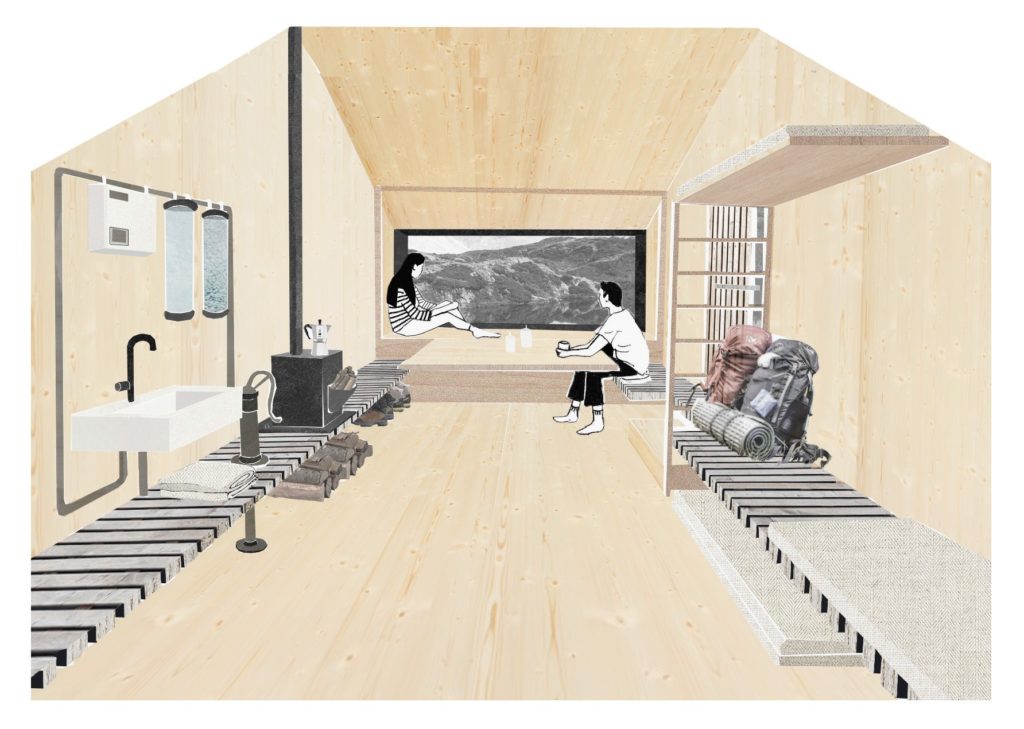
The refuge includes a global approach, it covers several areas and responds to various issues:
- environmental, by aiming to preserve the biodiversity of the ecosystem as well as by using bio- sourced materials. The project implements sustainable housing solutions.
- social, through its educational approach by encouraging hikers to cohabit and share in a small and frugal space.
The originality of the project is based on 4 concepts: it is archetypal, vernacular due to its local materials, self-sufficient in water and rustic insofar as it offers a minimal living experience.
This project was designed in the context of a global pandemic. We have tried to infuse it with a poetic dimension, while developing the technical points allowing its realization in order to make it accessible.
We hope that this getaway to the heart of the mountain made the jury dream as much as we did.

Louise and Noémie presented their project to a panel of design pros at the WantedDesign Emerging Designers Showcase including Giulio Cappellini and host Amy Devers of Clever as well as to the Conscious Design Awards jury.
How would you like the project to evolve and potentially be implemented?
The project is set in an isolated and difficult to access location, we still have to refine the implementation questions. Two avenues are available to us:
- The helicopter is the most common way, the fastest and causing the least nuisance on the ground. The pre-fabricated one-piece micro-architecture can be directly imported on the site. However, it remains expensive and its carbon footprint is not in line with the project’s sustainable approach.
- The other, slow and ethical alternative is to design the project as a kit. The spare parts will be brought by land and then assembled on the site. This would generate a participatory approach on the part of the local inhabitants.
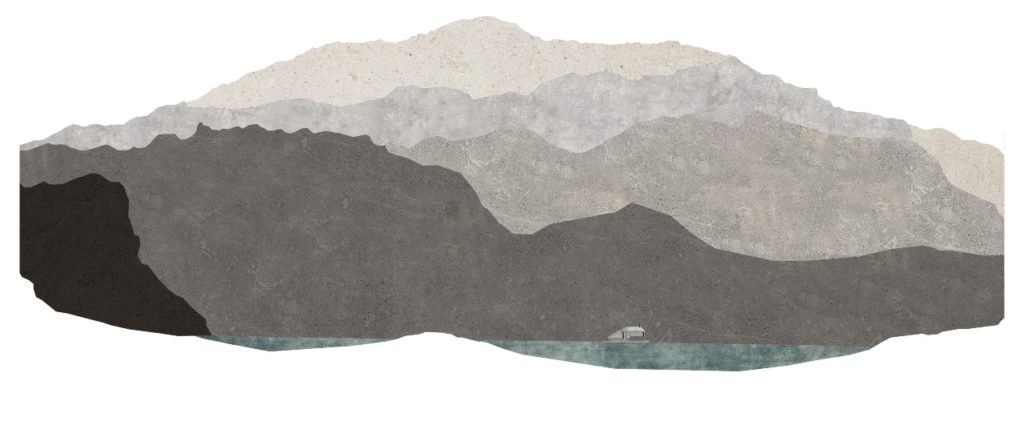
The next step is to get in touch with the City Council of Servoz and the Passy Nature Reserve (Lake Pormenaz being on the border of both locations) in order to raise funds and involve hikers in the process.
In the near future, The Refuge Island will be one of our school’s projects exhibited at the Paris Design Week and the Cité de l’Architecture et du Patrimoine with a dedicated travelling exhibition highlighting prospective research in ecodesign.
How do you and your project relate to the notion of “conscious and responsible design”?
In the current ecological context, we started from the observation that solutions exist, but the challenge was to make them accessible through educational methods.
In order to meet current ecological and social demands, it seems normal to us to design the project as a virtuous cycle. Our vision of responsible design arises from the design phase until its realization, while anticipating its reuse. As a result, construction and user waste is thought through from the design stage. The quality of materials and their durability is also part of our priorities: they could be reused, thus prolonging life cycles so that their environmental impact is cost and energy efficient.
We tried to adopt this approach for The Refuge Island. As a result, we have designed a water treatment prototype that is part of this sustainable and responsible approach. In fact, the water is first pumped and filtered for the needs of hikers (shower, tap). The gray water is then sanitized in the phyto-purification tanks to return to the lake, so that nothing is lost and everything is transformed.
The refuge offers a frugal lifestyle that respects its environment by taking the step of not consuming electricity or gas. You cook over a wood fire (rocket stove), light yourself with candles and the toilets are compostable.
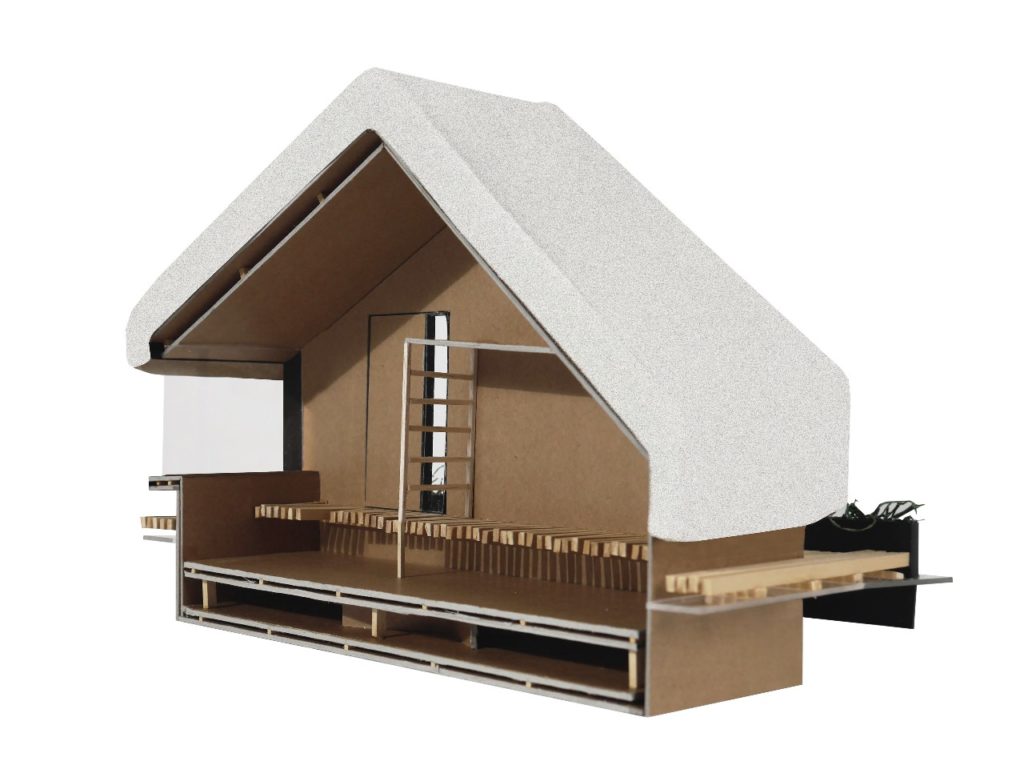
What is the next step for you?
Louise: Next year, I will pursue a Master’s degree in Space Design at Ensaama in Paris. I intend to travel to discover new cultures and meet designers who share eco-friendly and social values, with the aim of creating a collective innovation community dedicated to issues of sustainability and recyclability of an entire architecture project.
Noémie: Next year, I will continue studying for a Master’s in Space Design at the Ecole Boulle in Paris and then I plan to continue abroad to develop a global and transdisciplinary approach to design in connection with the crafts.
What is your dream project?
Louise: One of my goals is to design 100% ecological entertainment spaces.
Noémie: Personally, I would like to work in collaboration with product designers, craftsmen and scientists on a project for an experimental cultural place offering both alternative materials and social interaction.
Thank you, Louise and Noémie, for taking us behind the scenes of your winning concept. We are impressed by how students taking part in WantedDesign’s International Design Schools Show and other schools programming in spring 2021 have been able to deliver work with amazing creativity and resilience in spite of pandemic conditions. Besides being able to work with new tools and platforms to deliver projects, the students have demonstrated that being a conscious designer and recognizing their responsibility to the environment is also an essential part of their roles as designers. We encourage everyone to take inspiration from the awareness of these young designers.
Portfolios & Contact:
Louise Dequevauviller:
Email: louise.dequevauviller@ensaama.net
Website: https://115atelier.wixsite.com/website
Instagram: Louise Deq @atelier_115
Noémie Cruz:
Email: noemie.cruz@ensaama.net
Portfolio: https://issuu.com/noemiecruz/docs/english_book
Instagram @le.carnet.de.poche


